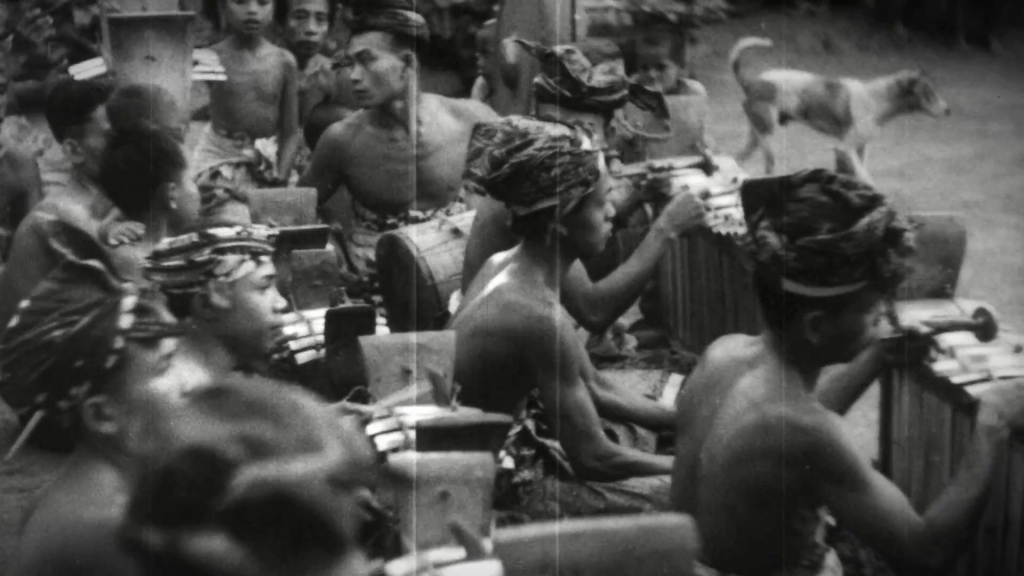Charlie Chaplin's visit to Java and Bali in 1932-1933 was an important event in the history of Indonesian cinema. The legendary comedian arrived in the Dutch East Indies on September 27, 1932, on board the MS Utrecht. He was accompanied by his wife, Paulette Goddard, and his personal assistant, Alf Reeves.
During his visit, Chaplin toured various parts of Java and Bali, including Jakarta, Bandung, Yogyakarta, Surakarta, and Bali. He was greeted enthusiastically by the local people wherever he went. In Jakarta, for example, he was welcomed by a large crowd of fans at the train station. He also met with prominent Indonesian figures, such as the nationalist leader Soekarno and the writer Pramoedya Ananta Toer.
Chaplin's visit was extensively covered by the local press, and his every move was followed closely by reporters. He was described as a "superstar" and a "living legend" in the newspapers of the time.
Chaplin's Visit to Borobudur
During his visit to Borobudur, Chaplin was deeply moved by the beauty and grandeur of the temple complex. He spent hours exploring the site, marveling at the intricate carvings and the massive stone statues of Buddha. In his autobiography, he described the experience as "an unforgettable sight" and praised the Dutch government for their efforts in restoring the site.

Chaplin was also struck by the spiritual significance of Borobudur. He wrote, "It is a monument of a vanished faith and of a vanished race, and it speaks eloquently of the high civilization that once flourished in this part of the world."
Chaplin's Visit to Bali
After exploring the wonders of Java, Chaplin and his entourage made their way to Bali, where they were greeted with open arms by the local community. Chaplin was fascinated by the Balinese culture and spent much of his time on the island studying and documenting their customs and traditions.
One of the things that captivated Chaplin most about Bali was the traditional dance performances. He was particularly taken with the grace and fluidity of the movements, as well as the elaborate costumes and makeup worn by the dancers.

Chaplin's interest in Balinese dance would have a profound impact on his movies. In his 1936 film, Modern Times, he incorporated a scene featuring a group of Balinese dancers performing a traditional Legong dance. The scene was a huge hit with audiences and helped to popularize Balinese dance in the West.
Chaplin's influence on Indonesian Cinema
Charlie Chaplin's visit to Indonesia had a lasting impact on Indonesian cinema. His innovative approach to storytelling and his use of humor and satire inspired a generation of Indonesian filmmakers, who went on to create their own unique brand of cinema that blended traditional elements with modern sensibilities.

In addition, Chaplin's endorsement of Borobudur and Balinese dance helped to boost tourism in Indonesia. Today, both Borobudur and Balinese dance remain popular attractions for visitors to the country, and their cultural significance has been recognized by UNESCO, which has designated both as World Heritage Sites.
In conclusion, Charlie Chaplin's visits to Borobudur and Bali were truly transformative experiences. His fascination with the beauty and grandeur of Borobudur and his appreciation for the grace and elegance of Balinese dance would go on to influence his movies and inspire generations of Indonesian filmmakers. Today, his legacy lives on in the vibrant culture and cinema of Indonesia.
References:
- Chaplin, Charlie. My Autobiography. London, Penguin Books, 1966.
- Pendit, Nyoman S. "The Story of Charlie Chaplin's Visit to Bali." Bali: Sekala & Niskala, vol. 1, 1986, pp. 34-47.
- Marr, David G. "Charlie Chaplin's Indonesian Interlude." Indonesia, no. 15, 1973, pp. 83-100.
- Miksic, John N. and Tranchini, Marcello. Borobudur: Golden Tales of the Buddhas. Tuttle Publishing, 2017.
- Dibia, I Wayan and Ballinger, Rucina. Balinese Dance, Drama and Music: A Guide to the Performing Arts of Bali. Periplus Editions, 2004.
- Tibbetts, John C. and Welsh, James M. "Charlie Chaplin's Modern Times: A Closer Look." Literature/Film Quarterly, vol. 9, no. 4, 1981, pp. 282-291.
- Chaplin, Charlie. Interviews. Edited by Kevin J. Hayes, University Press of Mississippi, 2005.
- Hanan, David. The Cinema of Indonesia: Twenty Years of Indonesian Film. Oxford University Press, 1991.



















